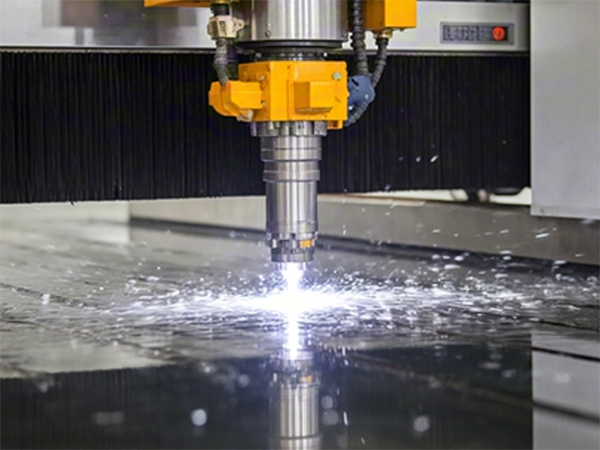Water-guided laser technology combines a high-energy laser with a high-pressure water jet to achieve ultra-precise, low-damage machining. It replaces traditional methods like mechanical cutting, EDM, and chemical etching, offering higher efficiency, less thermal impact, and cleaner results. Paired with a reliable laser chiller, it ensures stable and eco-friendly operation across industries.
What Is Water-Guided Laser Technology? How Does It Work?
Water-guided laser technology is an advanced processing method that combines a high-energy laser beam with a high-pressure water jet. Using the principle of total internal reflection, the water stream serves as an optical waveguide. This innovative approach integrates the precision of laser machining with the cooling and cleaning capabilities of water, enabling efficient, low-damage, and high-precision processing.

Traditional Processes It Can Replace and Key Advantages
1. Conventional Mechanical Machining
Applications: Cutting of hard and brittle materials such as ceramics, silicon carbide, and diamonds.
Advantages: Water-guided lasers use non-contact processing, avoiding mechanical stress and material damage. Ideal for ultra-thin parts (e.g., watch gears) and complex shapes, it enhances cutting accuracy and flexibility.
2. Traditional Laser Machining
Applications: Cutting semiconductor wafers like SiC and GaN, or thin metal sheets.
Advantages: Water-guided lasers minimize the heat-affected zone (HAZ), improve surface quality, and eliminate the need for frequent refocusing—streamlining the entire process.
3. Electrical Discharge Machining (EDM)
Applications: Drilling holes in non-conductive materials, such as ceramic coatings in aerospace engines.
Advantages: Unlike EDM, water-guided lasers are not limited by conductivity. They can drill high aspect-ratio micro holes (up to 30:1) without burrs, enhancing both quality and efficiency.
4. Chemical Etching & Abrasive Water Jet Cutting
Applications: Microchannel processing in medical devices like titanium implants.
Advantages: Water-guided lasers offer cleaner, greener processing—no chemical residues, lower surface roughness, and improved safety and reliability of medical components.
5. Plasma & Flame Cutting
Applications: Cutting aluminum alloy sheets in the automotive industry.
Advantages: This technology prevents high-temperature oxidation and significantly reduces thermal deformation (less than 0.1% vs. over 5% with traditional methods), ensuring better cutting precision and material quality.
Does a Water-Guided Laser Require a Laser Chiller?
Yes. Although the water stream serves as the guiding medium, the internal laser source (such as fiber, semiconductor, or CO₂ laser) generates substantial heat during operation. Without efficient cooling, this heat can lead to overheating, compromising performance and shortening the lifespan of the laser.
An industrial laser chiller is essential to maintain stable temperatures, ensure consistent output, and protect the laser system. For applications that prioritize low thermal damage, high precision, and environmental friendliness—especially in precision manufacturing—water-guided lasers, paired with reliable laser chillers, deliver superior and sustainable processing solutions.

We're here for you when you need us.
Please complete the form to contact us, and we'll be happy to help you.
Copyright © 2025 TEYU S&A Chiller - All Rights Reserved.